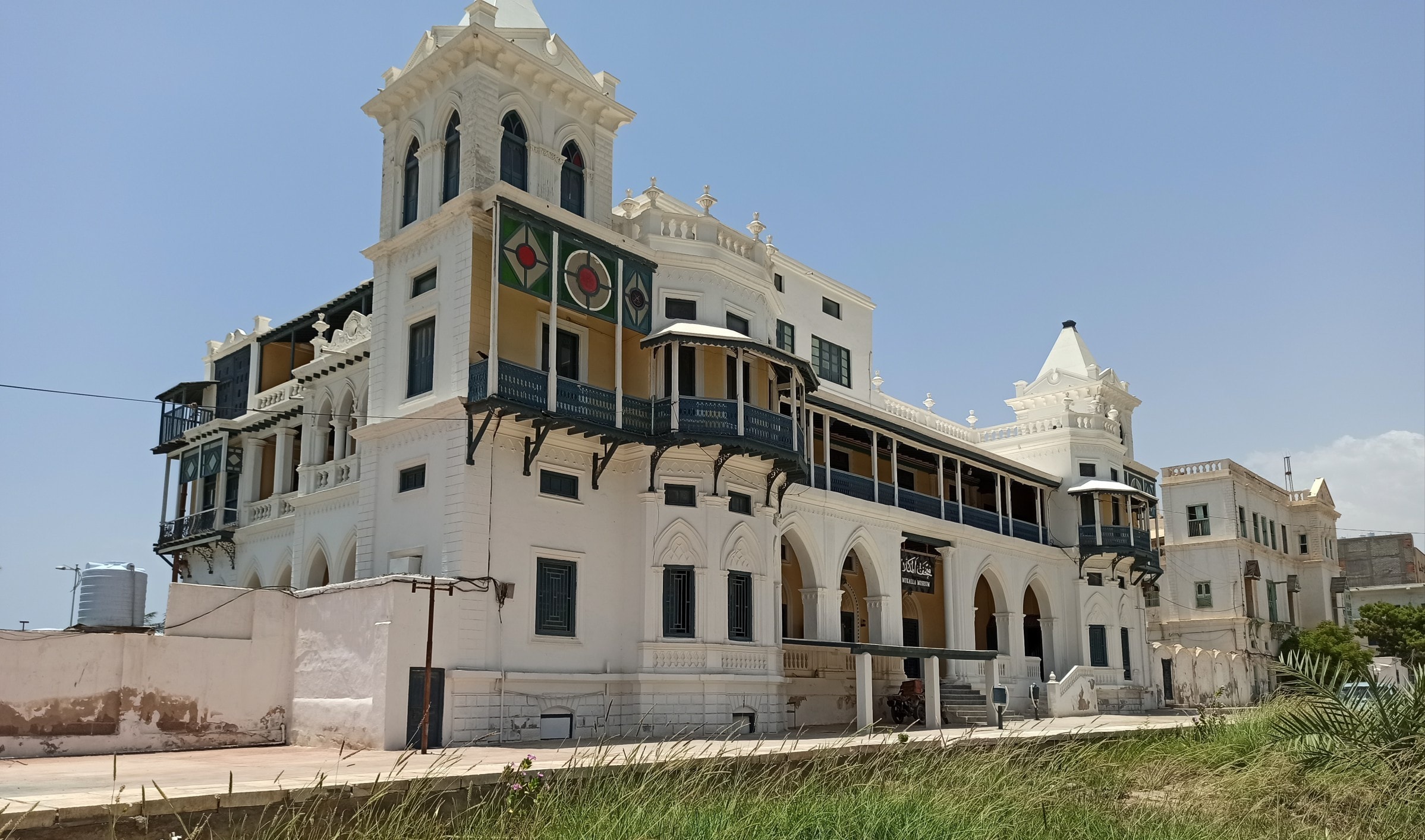
Sultan Al-Qu'aiti Palace in the city of Mukalla, Hadramout. September 3, 2020 (Abdullah Al-Shadli - South24 Center)
24-11-2022 at 12 PM Aden Time

Abdullah Al-Shadli (South24)
The governorate of Hadramout obtain historical landmarks characterized by their unique architecture and marvelous geometric neatness. Some of them date back to ancient time which constituted the architectural historical identity of the biggest governorates of South Yemen although some of them have been subjected to neglect.
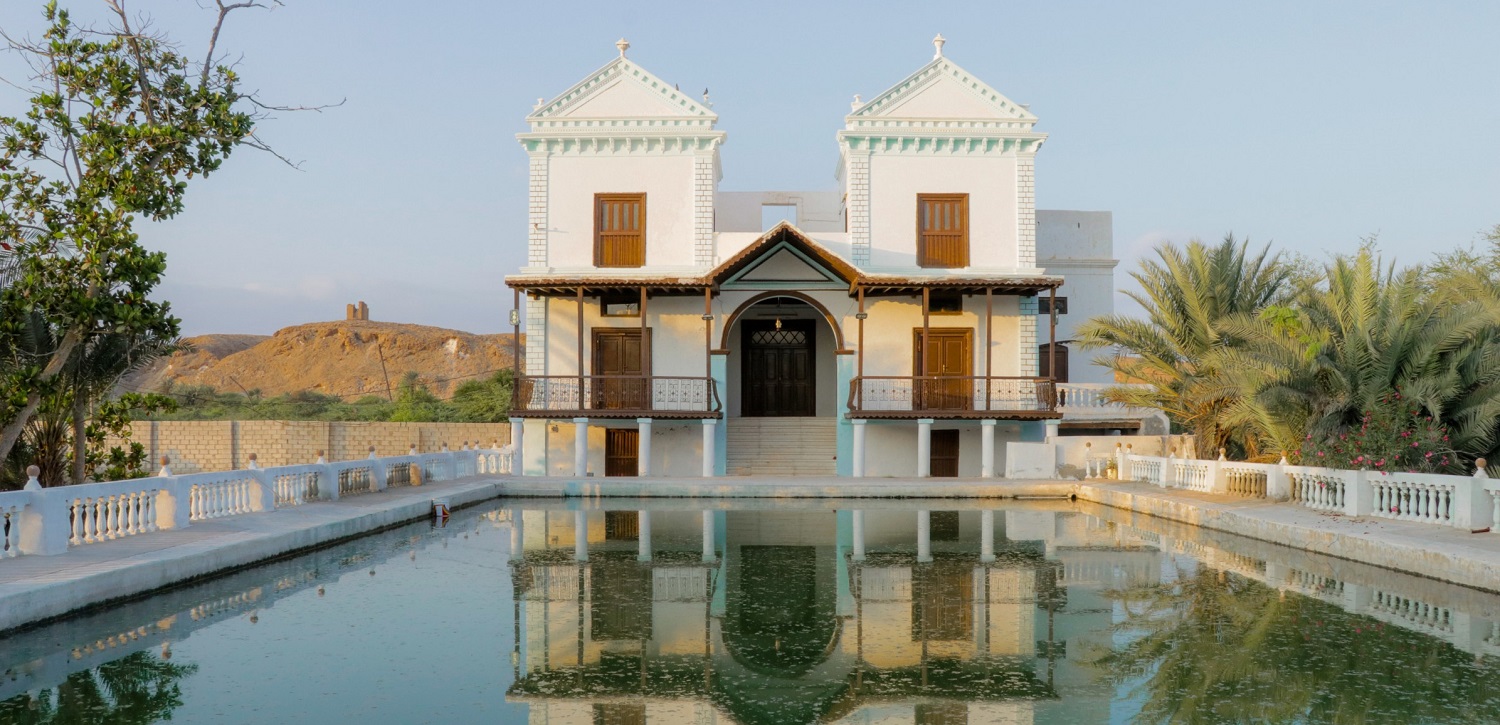
Al-Bagh Palace in Ghayl Ba Wazir, Hadramout, November 12, 2022 (South24 Center).
In some cities of Hadramout Coast, especially Hadramout's capital city of Mukalla as well as the two historical cities of As-Shihr and Ghayl Ba Wazir In the east of Mukalla, there are palaces and landmarks that provide a unique picture of the major cities in Hadramout.
The establishment of the current historical places in Hadramout Coast, particularly in As-Shihr, Mukalla and Ghayl Ba Wazir go back to the reigns of Sultanates and states in South Yemen. This includes for example the Qu'aiti Sultanate, the Awlaqi Sultanate and the Buraiki Sultanate.
In the city of As-Shihr, there are important historical palaces, top of which are Dar Nasser Palace which was built by Prince Nasser Bin Naji Al-Buraiki during the reign of the Al-Buraiki State in the end of the 18th Century. Moreover, the same district contains Bin Ayash Fort which was built by Abdullah Bin Omar Al-Qu'aiti during the era of the Qu'aiti State.
Historical landmarks
Sultan Al-Qu'aiti Palace
The Palace of Sultan Ghaleb Al-Qu'aiti [the Mukalla Museum today] was built in 1925 in the main entrance of the city of Mukalla that was known as “Bar' Al Saddah ''. The establishment of this palace was based upon the eastern Indian architecture style which affected many Sultans of the Qu'aiti State at this time.
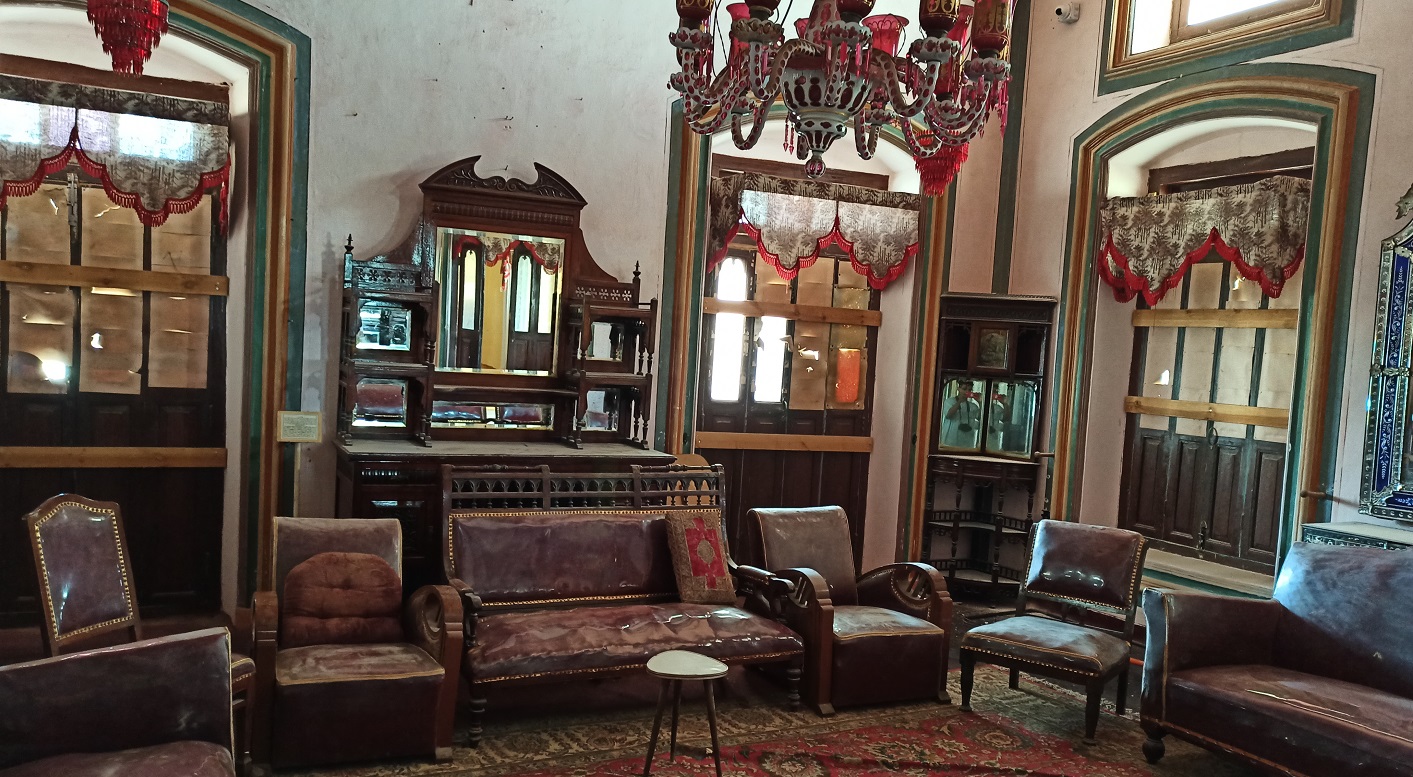
Inside Sultan Al-Qu’aiti Palace after being transformed into a museum in Mukalla in Hadramout. September 3, 2020 (South24 Center).
Sultan Al-Qu’aiti Palace was built on a firth. It consists of three storeys and surrounded by a fence with big areas which contains corridors, a hall to receive guests, a meeting room and a wide room for running the state topped by a throne chair.
After the downfall of the Qu’aiti Sultanate in 1967, the palace was dubbed “October 14th Palace". In recent years, the palace was completely transformed to a museum which consists of three suites.
Al-Ghwayzi Fort
Al-Ghwayzi Fort at the Northern eastern entrance of Mukalla is considered one of the most prominent and important ancient sites in the city. It is an architectural masterwork built of mud mixed with straw and traditional materials on a curved rocky slope.
According to historians who spoke to “South24 Center”, the fort is known for its strategic site whose aim was to defend the city against any attacks that targeted Mukalla on the Arabian Sea coast. The fort dates back to 1716 during the reign of the Kasadian Sultanate of Mukalla.
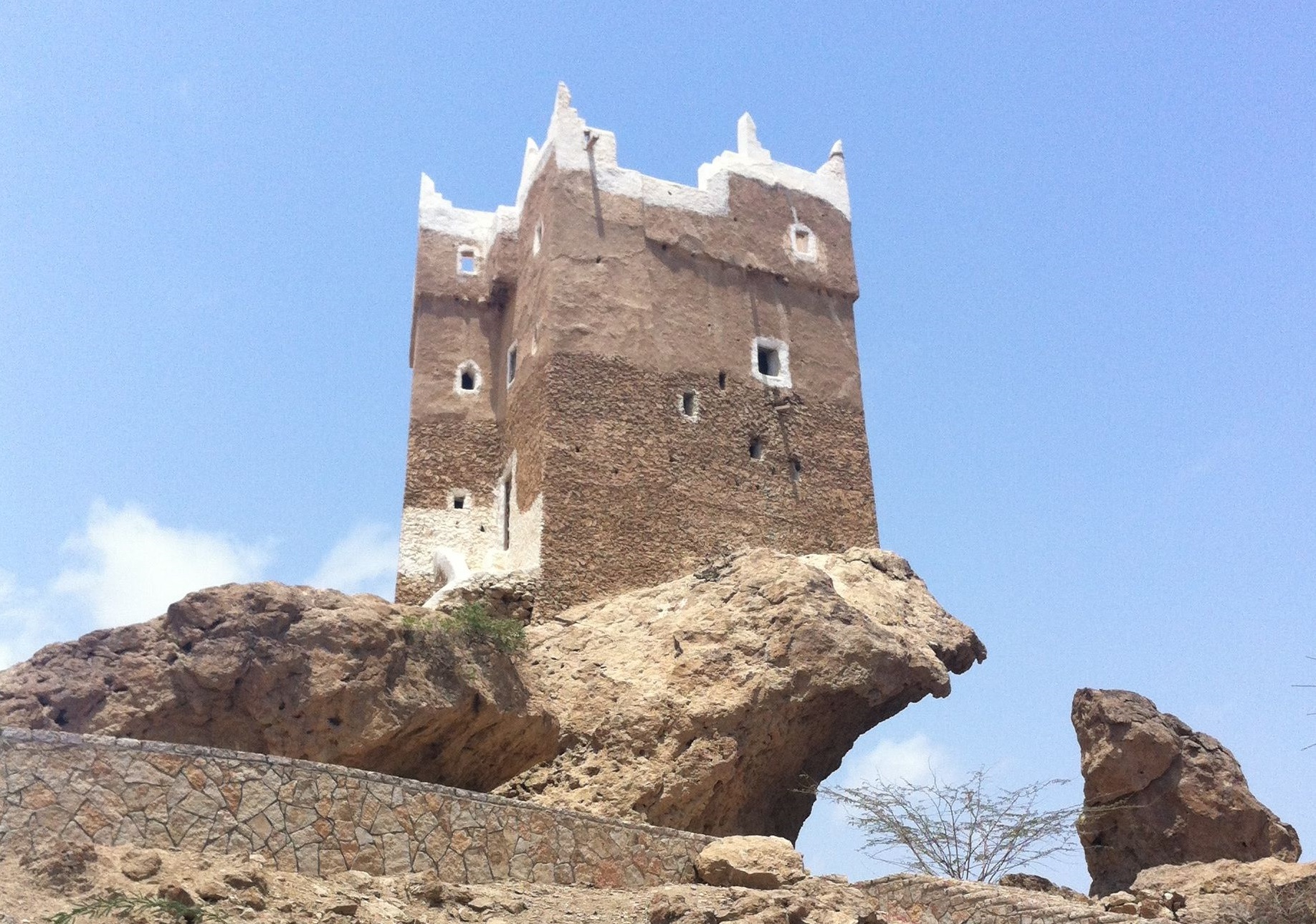
Al-Ghwazi Fort in Hadramout (Amin Saleh Awad)
The fort consists of two stories, the first of which has many rooms and several prismatic windows from all directions. The second one features large windows.
Moreover, the roof is lined with palm tree trunks, with a stone-paved base and covered with traditional gypsum.
Al-Bagh Palace
The palace is located in the west of the city of Ghayl Ba Wazir east of Mukalla. It was built by Sultan Omar Bin Awad Al-Qu'aiti in the last decade of the 19th Century.
Al-Bagh Palace has similarities with the Sultan Al-Qu’aiti Palace in Mukalla and Sultan Abdulkarim Fadl Palace in Al-Hawtah which is located in Lahj in South Yemen. Moreover, there are other palaces whose construction is inspired by Indian architecture.
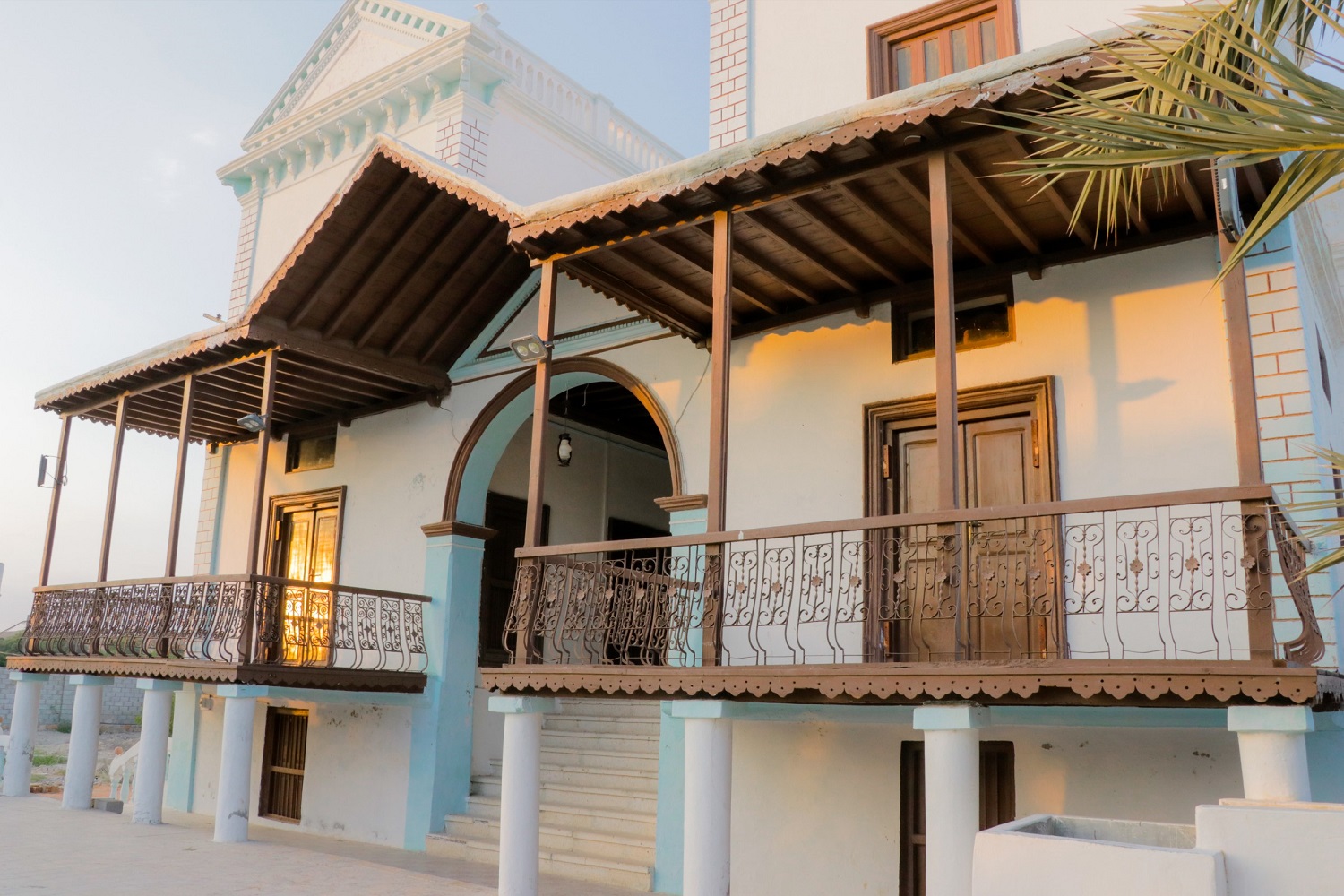
Al-Bagh Palace in Ghayl Ba Wazir, Hadramout, November 12, 2022. (South24 Center)
The palace consists of two storeys with many rooms. It was constructed within a very beautiful garden which previously included various trees, some of which were brought from India.
The palace contains a swimming pool filled by the water supplies from the palace garden’s well. In the western side of the fence which surrounds the palace, a special building to serve the Sultan was constructed. The palace was renovated by the heirs amid the absence of government interest.
Al-Awaliq Fort
It is located in the Al-Hazm Village in the Sadda area, east of Ghayl Ba Wazir. It was established on a geometrically high land. Its area is about 400 x 250 meters and consists of five high storeys.
According to experts, the fort was built in the mid of the 19th Century by Prince Abdullah Bin Ali Al-Awlaki who along with two other princes, Ghaleb bin Mohsin Al Kathiri, and Omar Bin Awad Al Qu'aiti, sought to establish a state in Hadramout during the British colonialism but they failed.
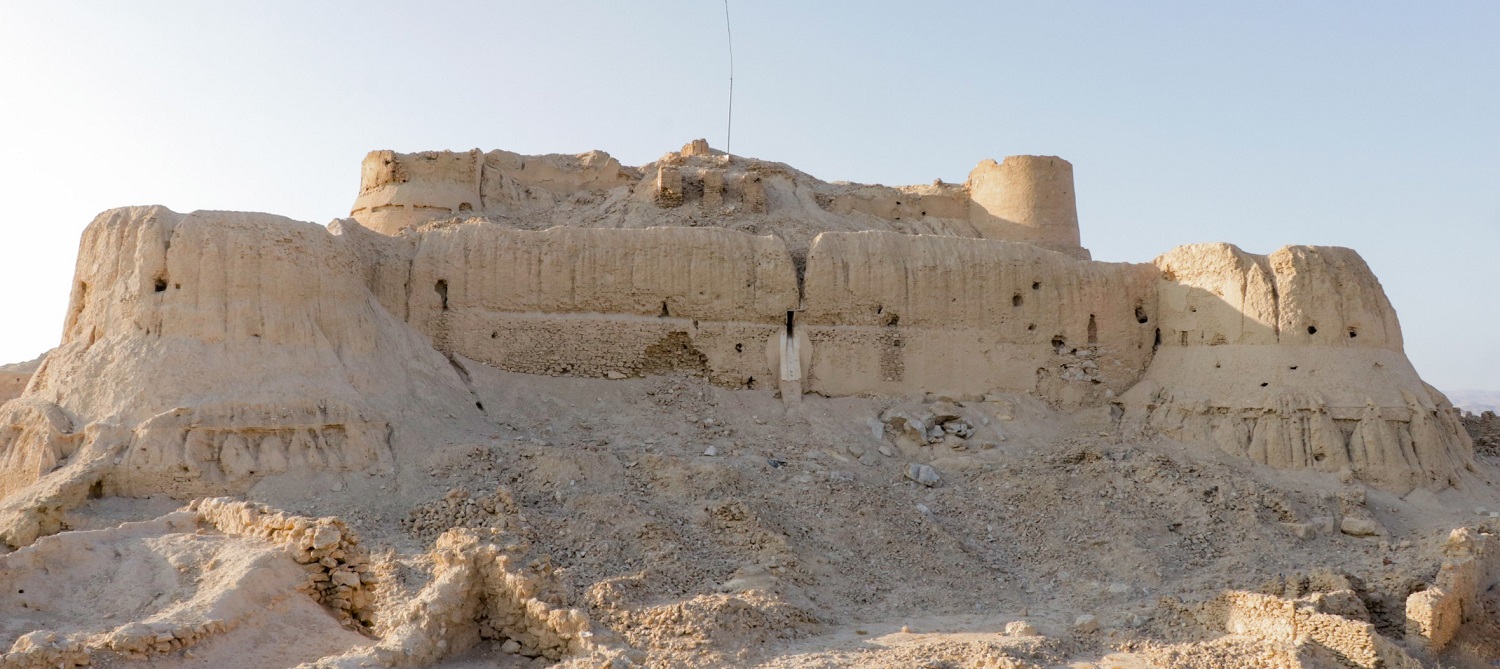
Al-Awalik Fort in Ghayl Ba Wazir, Hadramout, November 12, 2022. (South24 Center)
According to historians, the ships which passed through the Hadramout ports at that time took this fort as a guide.
The Middle School
First, this school was a palace for Sultan Munasser Bin Ghaleb Al-Qu'aiti when it was built in 1890 in Ghayl Ba Wazir. In 1944, the palace was transformed to a public school under the name of “The Middle School''.
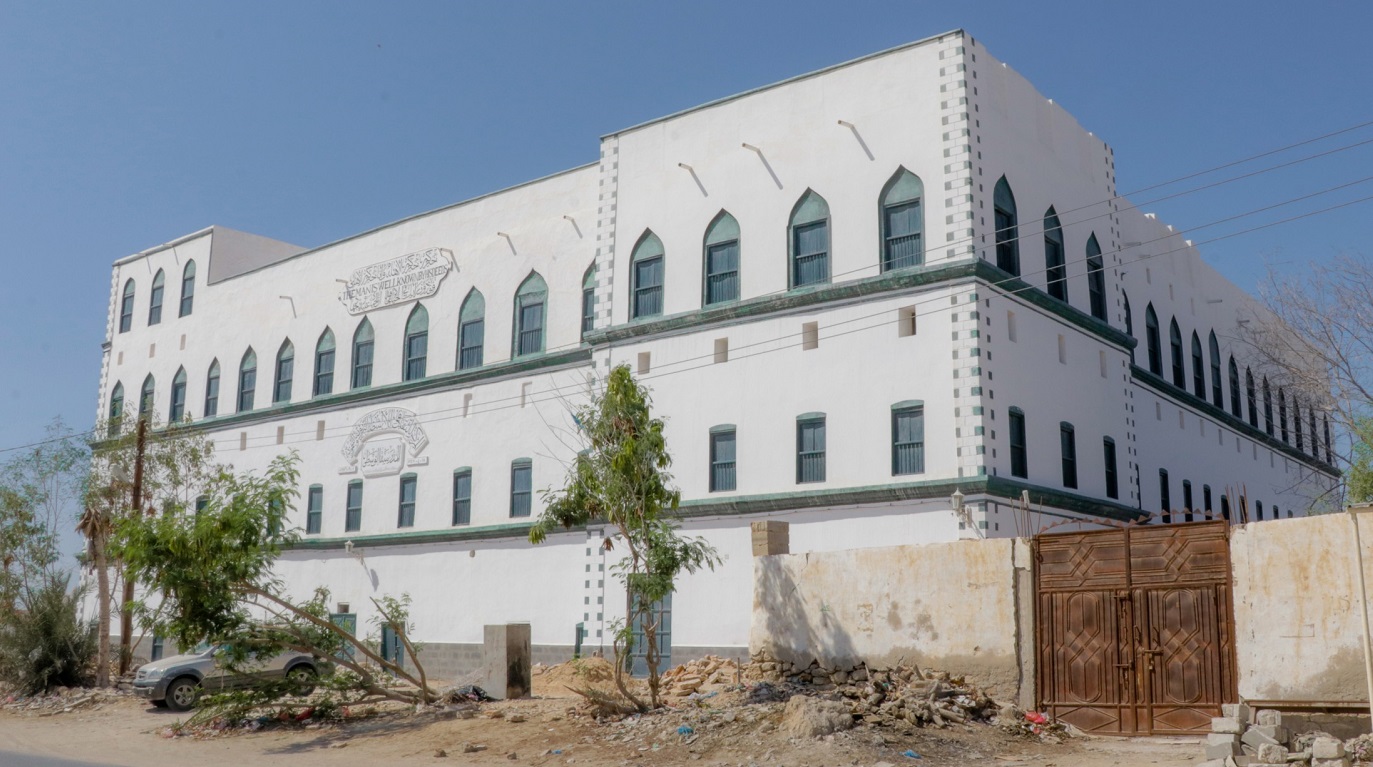
“The Middle School" in Ghayl Ba Wazir in Haramout. November 12, 2022 (South24 Center).
The school was the place where several prominent figures from Hadramout’s citizens graduated including the Southern leader Ali Salim Al-Bidh. The historical sources said it was then the only school in Hadramout before building several schools later. The school was recently transformed into a cultural center.
The Grand Mosque in As-Shihr
According to Historian Abdullah Haddad, the mosque in the city of As-Shihr which is known as “the Grand Mosque” far east to Mukalla is the first mosque in Hadramout and South Yemen in general.
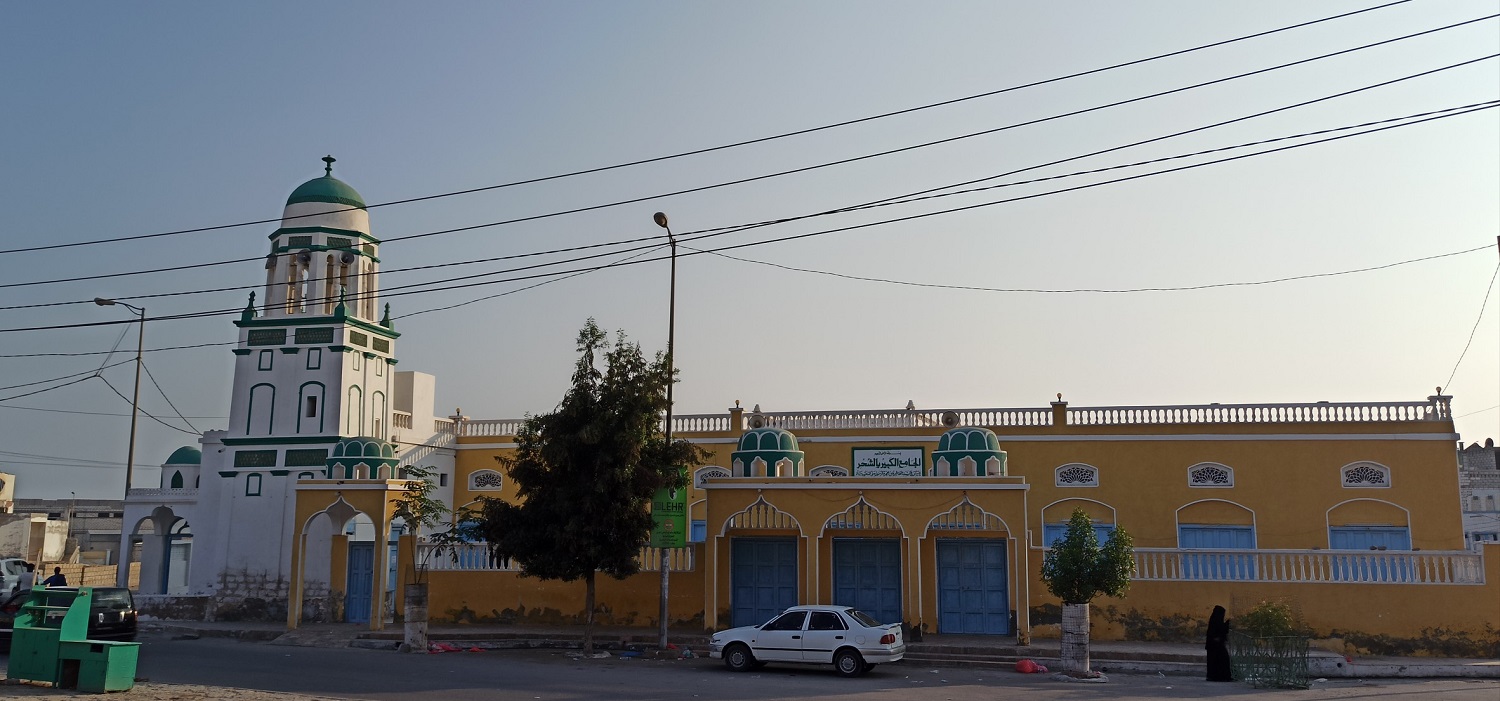
The "Grand Mosque” in the city of As-Shihr, November 12, 2022 (South24 Center).
Al-Haddad told “South24 Center”: “the mosque was built in the 16th Century after people of As-Shihr converted to Islam. They were among the Yemenis who became Muslims during the so-called the “Delegations Year”. The pillars of the mosque at that time were made of palm trunks, and its roof was made of the palm fronds".
The Aidrous Gate (Sadat Al-Aidrous)
The Aidrous Gate which is known by the Hadramis as “(Sadat Al-Aidrous) is considered one of the most prominent historical sites in the city of As-Shihr.
It was built during 1868-1888 ad. It constituted a unique example for the Islamic gates in Hadramout. It was named after Imam Sheikh Al-Aidrous to commemorate him and the nearby Al-Aidrous Mosque.
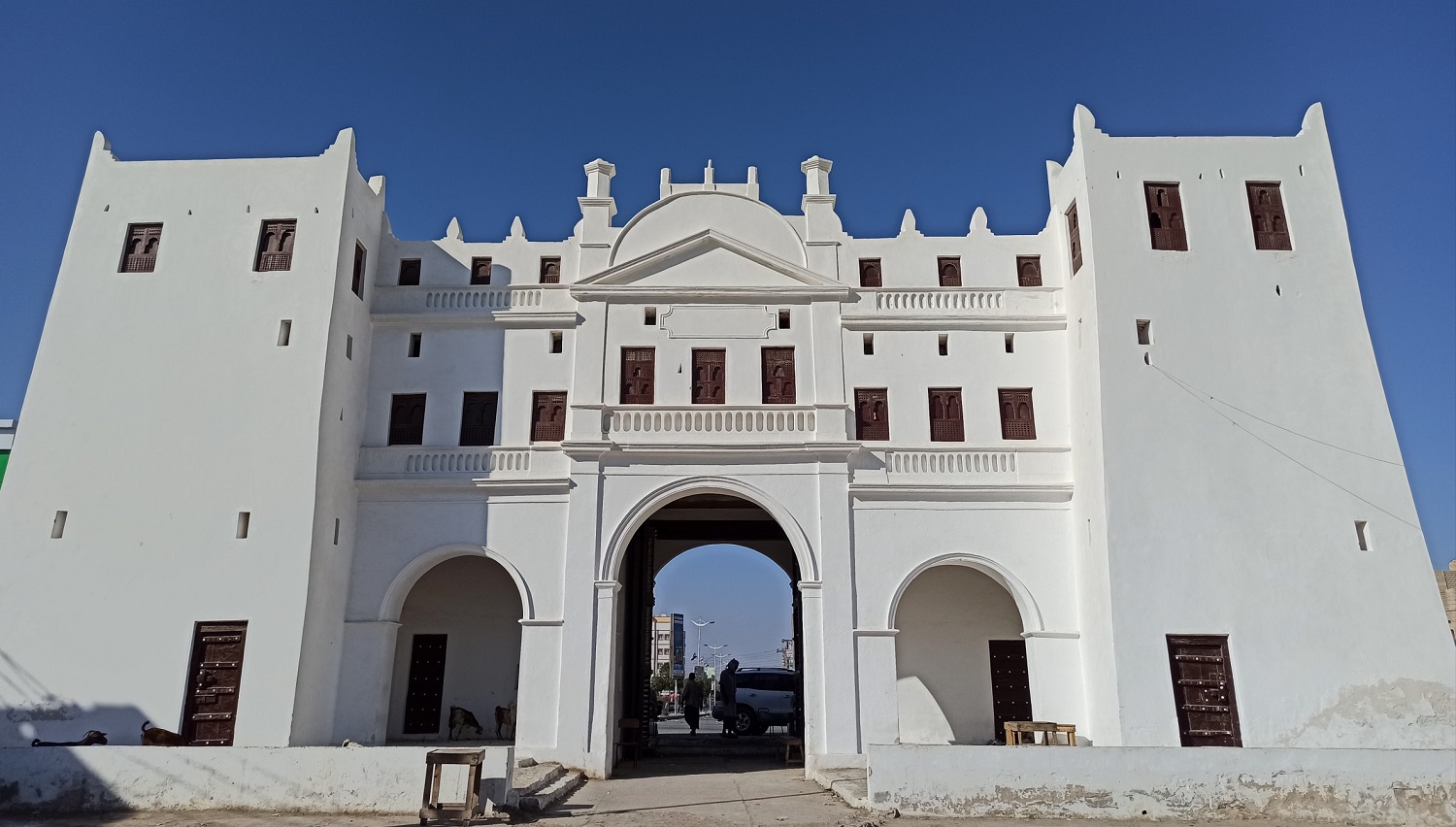
The Aidrous Mosque in Hadramout. November 12, 2022 (South24 Center).
The gate consists of three stories:
The first story: includes the entry which is about two and a half meters wide and four and a half meters high. Its entrance is closed by a thick wooden door of two equal sides.
The second story: contains a wide room on the top of the gate at the middle of the building. In the two suites surrounding it, there are four rooms and two bathrooms. Every suite consists of two bedrooms and a bathroom.
The third story contains two surveillance rooms in addition to a wall revolving around the roof at a height of one and a half meters. Today, the gate building is used as a media department and an office for the Antiquities, Museums and Manuscripts Authority.
The Buraiki State Palace
As-Shihr Governor Nasser Bin Naji Bin Brik Al Yafei constructed a palace for their state in the city of As-Shihr in 1768. During the reign of Al-Qu'aiti State, Sultan Abdullah Al-Qu'aiti Al-Yafei built two other stories in 1878 at a time when As-Shihr was the capital of Al-Qu'aiti State.
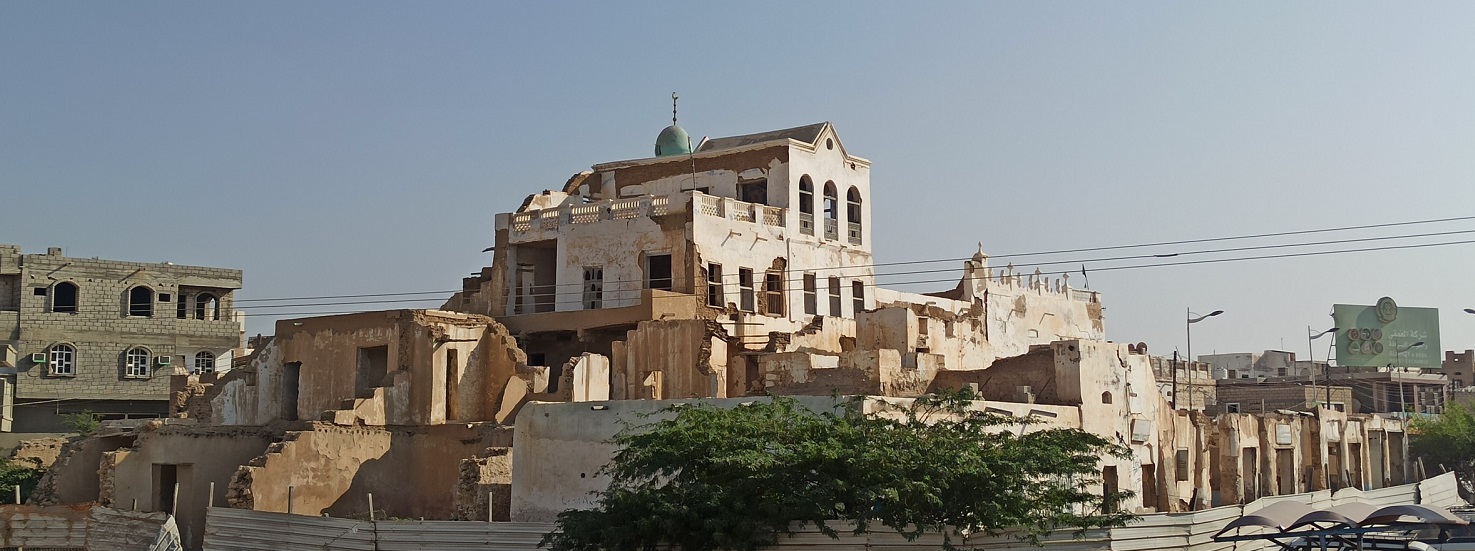
The Buraiki State Palace in the city of As-Shihr in Hadramout, November 12, 2022 (South24 Center).
The British colonialism era witnessed more expansions. A room for the adviser, a Sharia court, financial departments, a post office and security department were constructed.
Tomb of the Seven Martyrs
As-Shihr people in Hadramout established the Tomb of the Seven Martyrs to commemorate the sacrifice made by 7 men in order to liberate their land during the Portuguese invasion.
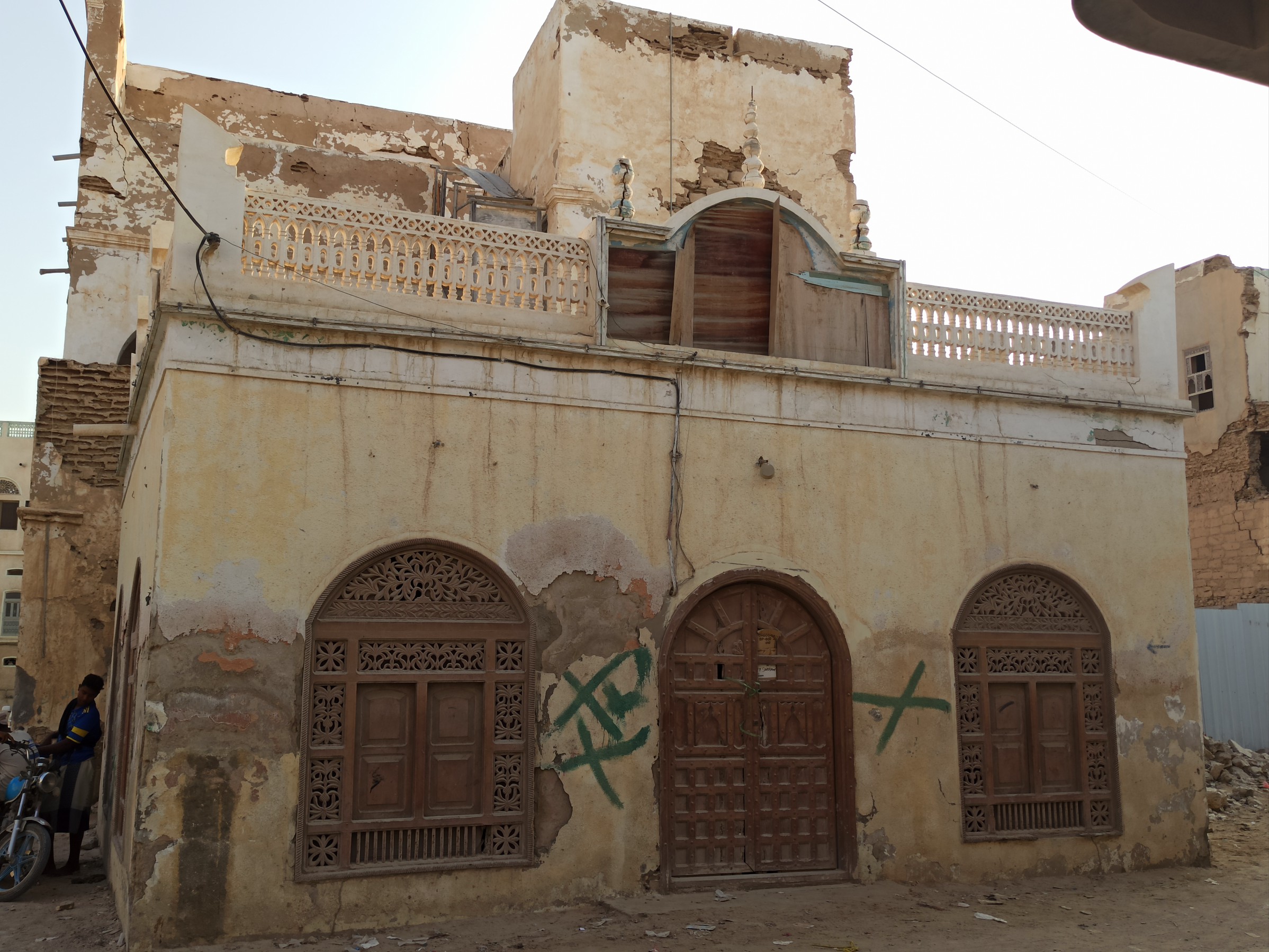
Tomb of the Seven Martyrs in Hadramout. November 12, 2022 (South24 Center).
Those martyrs motivated people against the Portuguese who invaded the city of As-Shihr in the 16th Century, specifically in 1523. Historian Haddad told “South24 Center”: “What were made by the Seven Martyrs and 700 others were considered a wonderful example for sacrificing for the nation and pride".
According to the book “the Seven Martyrs” by its Hadrami author Mohammed Abdulqadir Bamatraf, seen by “South 24 Center”, the list of martyrs includes:
1. Sheikh Yaqoub Bin Saleh Al-Huraidhi
2. Sheikh Ahmed Bin Abdullah Bafadl
3. Sheikh Salem Bin Saleh Baween
4. Sheikh Hussein Bin Abdullah Al-Aidarous
5. Sheikh Ahmed Bin Radwan Ba-Fadl
6. Sheikh Radwan Bin Fadl Ba-Fadl
7. Prince Mutran Bin Mansour
Historical symbolism
The importance of these palaces, landmarks and forts is that they include exclusive civilization features for Hadramout and South Arabia as a whole according to Professor Riyad Bakremoum, Director General of the Office of the General Authority for Antiquities and Museums.
“Distinctive architecture features along with the civilization of the local and traditional characteristics as well as other civilizations, especially India and east of Asia gave them unique beautiful characteristics. This gave the whole region an exclusive new style for that phase which can't be repeated, and must be preserved," he told "South24 Center".
For his part, Adel Baakim, Director of "Dar Al-Asaa for Studies and Publishing" told “South24 Center” that “the importance of these landmarks is that they serve as eyewitnesses of the ancient history, especially the city of As-Shihr throughout its ancient and medieval Islamic history”.
“This city is very important. It is the most important one in Hadramout Coast in the Islamic history," he added.
Neglect
Like other architectural and historical landmarks in South Yemen, the historical site in Hadramout was subjected to deliberate neglect many times along with the erosion factors that led to the collapse of some of them.
One of the most prominent landmarks which is about to vanish is the Seven Martyrs Tomb and the Al-Buraiki State Palace. Both of them lost most of their features and are currently prone to be mere rubble.
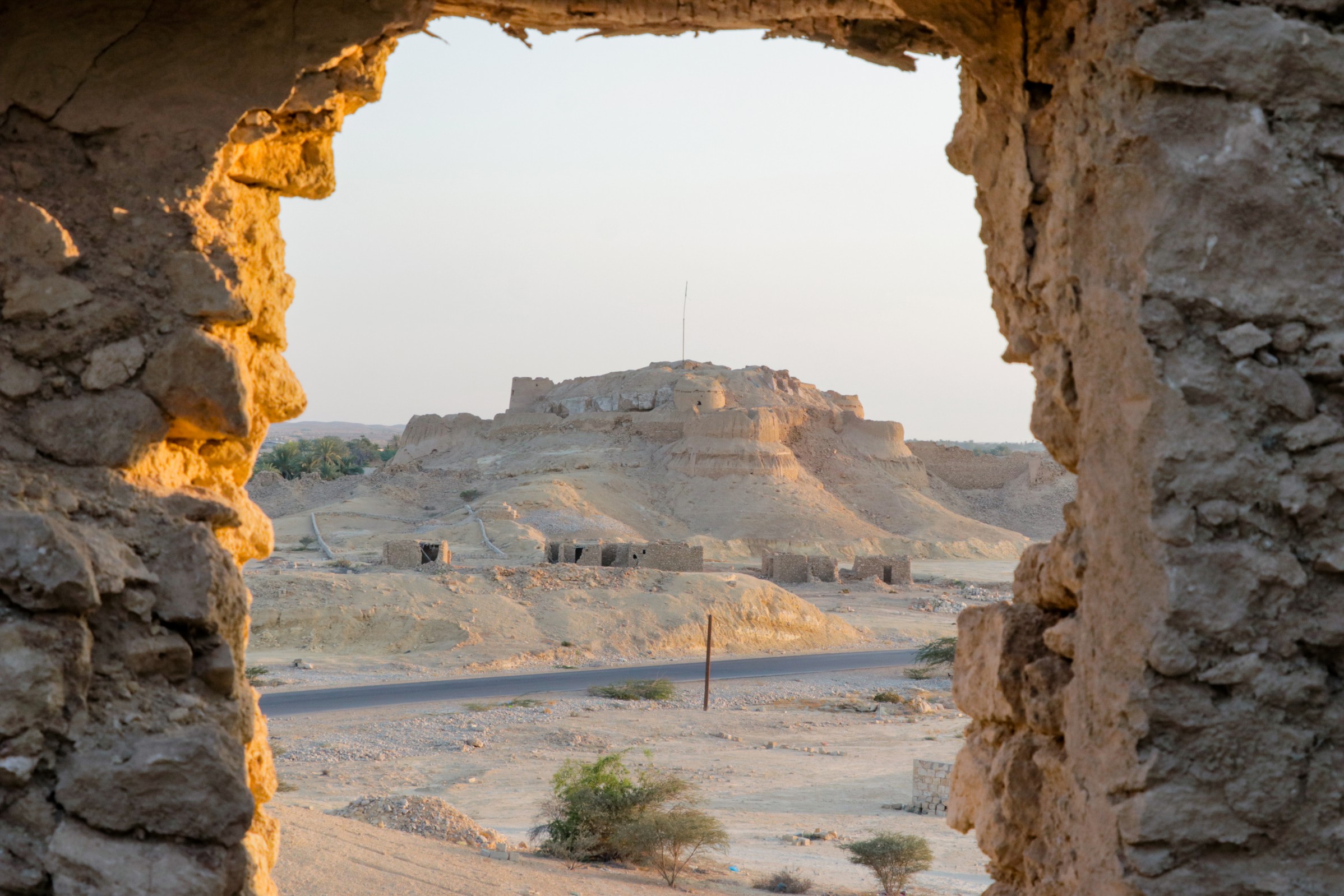
Al-Awalik Fort in the city of Al-Shihr in Ghayl Ba Wazir, November 12th 2022 (South24 Center).
In this regard, Bakremoum said: “the Antiquities Authority has exerted big efforts lately as of 2018 in listing and submitting studies for restoring some landmarks, some of which succeed to obtain funding”.
He added: “Some maintenance works were implemented for some landmarks such as the palace of Sultan Munasser Al-Quaiti [the Middle School in Ghayl Ba Wazir] and [Mukalla Museum]. Many of them are still in poor conditions today and need urgent repair work”.
He added that the Antiquities Authority lacks the simplest capabilities and suffers from low salaries and operational balances. We made expansions on a large area and in many other aspects, not only the aspect of archaeological and historical monuments and buildings".
He blamed the successive governments adding that: “They don't care about the history and the historical landmarks in this ancient state".
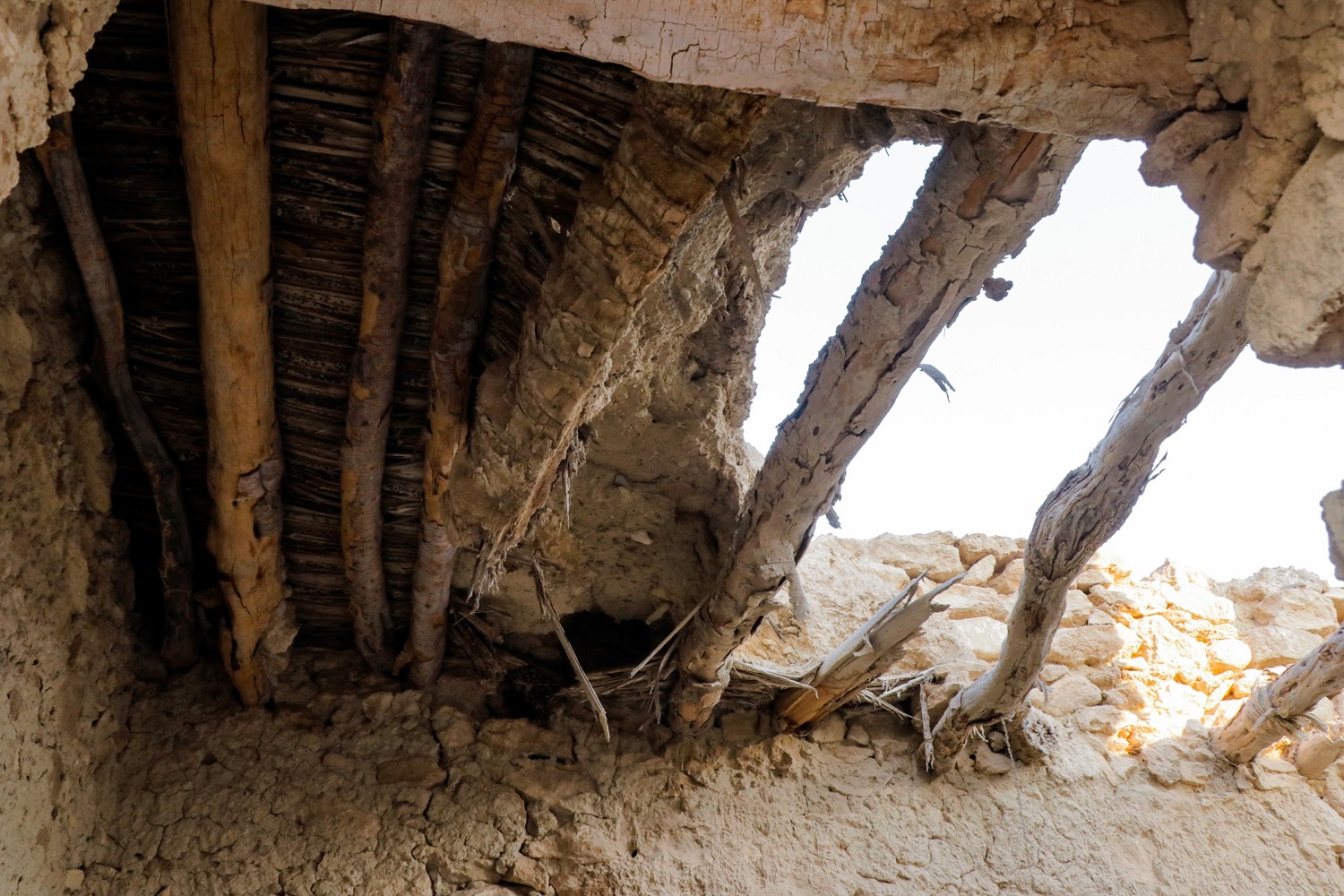
The shabby watchtowers of Al-Awalik Fort in the city of As-Shihr in Ghayl Ba Wazir in Hadramout, November 12th 2022 (South24 Center).
It is worth mentioning that Wadi Hadramout also has several palaces and historical archaeological landmarks which will be addressed in a subsequent report soon. The neglect has led the disappearance of some of its historical landmarks.
Previous article